Top Renovation Tips 2023
Here are our top renovation tips for 2023! Home renovations need not be super stressful, all you need is a little help to plan ahead for your upcoming project.
If you are a homeowner undertaking renovation works in 2023, we have some top tips to help keep your stresses down this year.
Plan: Before starting any renovation work, it's essential to have a clear plan that includes a budget, a timeline, and a detailed design. This will help ensure that the project stays on track and within budget.
Get the right permits: In Singapore, you need to obtain the necessary permits from the relevant government agencies before starting any renovation work. Failure to do so can result in fines or even legal action.
Choose the right contractor: Selecting a reputable and experienced contractor is crucial to the success of your renovation project. Be sure to check their references, read reviews, and ask for a detailed contract that spells out the scope of work and the cost.
Prioritize safety: Safety should be a top priority during any renovation project. Make sure that the contractor follows all safety regulations and that the work site is kept clean and organized to minimize hazards.
Focus on functionality: When planning your renovation, think about how the space will be used and what features are most important to you. This will help you make the most of your space and ensure that your renovation is functional and comfortable.
Consider energy efficiency: Renovations are a great opportunity to improve the energy efficiency of your home. This can help you save money on your utility bills and make your home more comfortable to live in.
Don't neglect the details: Attention to detail is crucial in any renovation project. Be sure to choose high-quality materials and finishes, and pay attention to the details, such as lighting, hardware, and paint colors.
Hire Professional Interior Designer: This can be a great help if you do not have a clear idea about how your renovation should be. They will help you to plan and design your space and can also manage your renovation project effectively.
3 Rules To Help You Choose Your Kitchen Floor Tiles.
When it comes to kitchen flooring, there are many alternatives. If you're in the procedure of remodelling your kitchen, at some point you've most likely been overwhelmed by the amount of selection available. Together with your choice of the wall colour, floorings will have the single greatest effect on the overall feel and look of your space. Without direction, you can finish off with a kitchen area that really feels disjointed. Never ever fear, we help you cut through the mess as well as streamline the process.
When it comes to kitchen flooring, there are many alternatives. If you're in the procedure of remodelling your kitchen, at some point you've most likely been overwhelmed by the amount of selection available. The style of the tiling, as well as the style of your kitchen area, is essential. So it's simple to really feel overwhelmed in a sea of colour swatches, examples and also structure choices.
What floor you select, is naturally, really vital, as a result of its ability to tie a space with each other. Together with your choice of the wall colour, floorings will have the single greatest effect on the overall feel and look of your space. Without direction, you can finish off with a kitchen area that really feels disjointed. Never ever fear, we help you cut through the mess as well as streamline the process.
1. Choose easy-to clean-tiles
Many people pick floor tile floor covering because it's easy to tidy. This is a super essential factor to consider. As the space where you prepare, cook and also enjoy your dishes-- sanitation is ought to always be leading of mind. Talk with your neighbourhood ceramic tile specialist concerning their selection of easy-to-clean ceramic tiles. You'll want to select something that won't stain or fracture easily. Clay, as well as sedimentary rock, are wonderful options, and they're fired to appear like all-natural stones. Quarry floor tile is much more costly than even more standard ceramic, but it's fairly striking in the appropriate setting. Keep in mind that some tiles will certainly call for special cleansing options to clean, so read up regarding cleansing practises before making a decision.
2. Suit your cabinets
Among the main features in your kitchen area is the kitchen cabinetry. Your cabinets typically identify the general 'look' of your room. The cupboard surface you pick can help establish your cooking area ceramic tile selection, as they will need to reside in harmony to produce the natural design. Think about colour and also contrast when deciding. Do you want to make use of the same colour throughout, or go with opposite ends of the spectrum? Both can have an influence when done correctly. Bring a sample of your closet coating to the store when selecting your ceramic tile. You won't regret planning ahead.
Go for durability
Kitchen area remodellings allow financial investments, so durability is key when picking your kitchen floor tile. Kitchen areas are typically the most-used areas in your home, so pay cautious consideration to exactly how you utilize your space. Although most kitchen area floor tile is resistant, it still calls for love and also attention, as well as the long life of each material, varies. See to it you purchase flooring ceramic tile that is really intended for usage as 'floor tile'. If you choose a wall floor tile for flooring, typically the coefficient of friction will be too low, causing floor tile that is too unsafe for walking. Choose a floor tile that has actually a minor elevated pattern, or appearance to it to permit a much safer cooking area flooring. These floor tiles likewise tend to be extra durable options. In the long run, you need something that can deal with everyday wear and tear as well as still look excellent.
Purchasing kitchen area tile doesn't need to be a drag. In fact, you don't even require to leave the convenience of your house. You can locate all your details online, include evaluations and also mock-up images. You can even take into consideration getting samples, as well as have them supplied at your home to contrast your choices.
Your Guide to Industrial Design Style.
The industrial design aesthetic manages to give a sleek looking modern space; yet also manages to incorporate an organic and old industrial charm. When you say industrial style, many people think about stainless steel and sharp edges. However, there can be much more to it. Our step by step guide shows you how to bring this into your home.
A few design trends are flexible, easy to implement, and a lot of fun to look at. And one of those is industrial style interior design. The industrial design aesthetic manages to give a sleek looking modern space; yet also manages to incorporate an organic and old industrial charm. When you say industrial style, many people think about stainless steel and sharp edges. However, there can be much more to it.
Industrial Living Room With Wood Tones
There are no true principles that urban industrial style was built from. Instead, it slowly morphed into today's Open-plan spaces with high ceilings, huge windows, and lofted bedroom space. The key element for any urban-industrial space is flexibility. Thoughtfully arranging furniture turns your Singapore HDB or Condo into whatever you need it to be — everything from a nursery to an office, while still being a place to call home.
What Is Industrial Design & Where Did It Originate?
Industrial Design Dining Space
The industrial look has been around for centuries, but initially, it was never a “style” at all. Or at least, it didn’t set out to be. In the 1700s, the industrial revolution hit, and the world was changed forever. Factories sprung up all over major cities in Europe and America. These large buildings were simple, functional, and utilitarian. They had huge windows to let in natural light and an open plan floor space. To save money and minimise fire risk, most were kept plain – no paint, and with bricks, pipe, and ductwork left completely exposed.
Two hundred years later, advancements in the construction industry allowed us to make bigger, better, and more efficient structures. The old factories closed down, giving way to modern manufacturing plants on the outskirts of the city. But the factories wouldn’t stay abandoned for long. In the mid-20th century, many of these spaces were revived. Not as factories, but as housing.
Thus, the “industrial chic” look was born. Interior designers worked with the exposed brick and metal to create spaces that were bold, edgy and could blend with any style.
Industrial really refers to the fact that this style is very much fuss-free. It is a no-nonsense type of interior design and pulls a lot of inspiration from warehouses, industrial structures, and factories. But that does not mean that it needs to be a cold environment.
Urban Industrial design is unique in comparison to other home styles. Instead of manifesting from an architectural movement, this gritty look came from a lifestyle choice of artists and musicians. Forgoing traditional housing for makeshift live-work spaces inside of abandoned warehouses and factories, artists created this thrown-together look of street finds, thrift store purchases, and pieces made out of whatever happened to be laying around.
You can have a nod to the industrial style interior design simply by having some bare bricks and some salvaged materials; exposed brickwork, industrial pipe, and more to pull this look together.
Why industrial style interior design might be for you.
Industrial bedroom with metal light fixture
There are some styles of interior design that are hard to keep up with. For example, if you love minimalism, but you have a family, minimalism can be hard to keep control of. More people usually means more stuff. You have to be very smart with storage, and that can take its toll. However, interior design that is based on industrial styling is super flexible.
While most people try to conceal the building materials of their home, the industrial interior design distinctly displays these materials. This results in the kind of raw, unfinished look that has recently become an incredibly popular design style. The industrial design mixes the old with the new by blending wood and metal elements in a unique and upscale way.
This style of home interior design is perfect for those living in an urban environment, so if you’re moving into or thinking of redoing your Singapore HDB apartment, renovating your BTO or your Condo, the industrial interior design may be the style for you. It’s all about showcasing neutral tones, an open layout, and mixing wood and metal furniture to achieve that signature industrial look.
Styling tips to bring Industrial Design into your home.
Bring industrial style into your bathroom with unique fixtures
The Key Features Of Industrial Decor.
Industrial home design features exposed pipes, air ducts, wire, beams, and brick.
Industrial homes are usually open concept.
Industrial furniture and decor is often blocky in shape and made of metal, wood, leather, and even salvaged parts.
Here’s how you can achieve the modern industrial style throughout the entire home.
Layout.
All industrial spaces tend to follow the “converted warehouse” look even if the building is new construction and was never truly a warehouse, to begin with. This means brick walls, high ceilings (or the illusion of these), natural light, exposed piping, and small-plank wood or poured concrete floors. Carefully placed furniture and area rugs define each space as a living area, dining area, and office.
An open plan layout is a core element of industrial design.
True industrial lofts that have been converted from warehouses typically don’t have walls, but if they do, the walls are not full height, allowing natural light from the floor-to-ceiling windows to penetrate every corner.
If you have a loft to work with, the only clearly defined rooms are the kitchen and the bathroom. Often, lofts feature a one-wall kitchen with a cabinet, fridge, sink, and stove all along a single wall. Using a kitchen island is a great way to further define the kitchen and it can often double as a dining table. This keeps the kitchen open to the rest of the space and sticks with the flexibility rule that defines industrial design.
Industrial Style Flooring.
Flooring is similar to all other architectural elements of industrial design, in that it is usually made from natural materials such as wood and concrete. Concrete can be left a plain grey and polished or stained to give it a more old-fashioned look, which can bring in an interesting textural element. A concrete floor would feel unfinished in many other spaces, but it adds some real visual impact within industrial style homes.
Concrete floors can feel cold and impersonal to some people, so an alternative to consider is another natural flooring material like hardwood. If you’re doing a traditional take on industrial design, you would select distressed floors made from reclaimed wood. For a modern spin, you might choose polished wide planks of wood instead.
Area rugs to help delineate and define separate spaces. You can position these rugs carefully to create spaces like a living room and a dining nook. Proper rug placement is one of the easiest ways to help an open concept floor plan flow more naturally.
Concrete Or Brick Walls.
One of the easiest ways to achieve the industrial vibe is by leaving your concrete or brick walls just as they are. No paint or plaster is necessary.
Concrete is a blank slate – literally. You can match it with neutrals like grey or brown, or you can experiment with contrasting colours. What works best in an industrial styled home that has exposed brick walls and uncovered windows to let in the lightest, is a blend of deep colours, soft fabrics, and lots of patterns.
Colours.
Generally speaking, industrial design features neutral colours. Black and white both feature prominently, along with various shades of grey and brown. Using neutral tones throughout the home helps it feel more spacious and lends a sense of continuity. Using neutral tones can also help the industrial details in a room pop out even more.
You can bring in your own personality with bright pops of colour in the form of art, rugs, and some other decor that will be in direct opposition to your industrial style.
Exposed Piping.
In most homes, exposed pipes and structural beams would be plastered over, covered up, and painted before you even move in. But with industrial house design, you can skip that last step and save on money and stress. Exposed piping is a staple of the industrial style. This makes it perfect for HDB’s where piping cannot be permanently concealed. And contrary to what some people believe, it isn’t messy at all. It’s authentic, raw, and captivating.
Use Metal And Wood Furniture.
A key feature of industrial design is the use of metal and wood in the space. Selecting furniture pieces made from either metal or wood blends the old with the new and gives your home an interesting contrast. Wooden pieces should be weathered rather than new looking, so find unfinished furniture.
For metal furniture, you can choose an antique brushed or oiled finish to give your home a vintage feel. If you prefer a more modern look, you can opt for polished chrome. And metal furniture doesn’t have to be uncomfortable; you can find plenty of comfortable metal bar stools or tables that will accentuate your home's style without sacrificing comfort. After all, this style is meant to be inviting, not severe.
Leather has a prominent place in industrial-style spaces, as (you guessed it) furniture upholstery. Leather embodies the essence of industrial style, which is all about taking something old and giving it new life and purpose. It's equal parts rugged and refined. Think about furnishing your industrial living space with a cosy leather club chair or leather side chairs with metal legs. If you don't want to go too crazy with leather, think about furnishing your space with a leather ottoman or pouffe instead.
Soft Textiles.
Without any softness, an industrial space can feel a bit cold and uninviting. This is where faux fur and thick wool textiles come in. Soften the hard lines and cold metal of industrial furniture by throwing thick wool throw blankets over your sofa and side chairs. It might seem glamorously out of place in concept, but a faux sheepskin or hide rug can be one of the best additions to an industrial space, as it can add softness and texture to bare floors.
As far as patterns, once again the flexibility of industrial lofts comes into play. It can be any pattern you like and can even be a combination of boho, geometric, and stripes. This is a chance to experiment and discover your own personal look.
Industrial Shelving.
What do you get when you combine wooden planks and metal pipes? Chic industrial storage solutions for your home.
Open shelves are a great way to display your knick-knacks and show off your personality. These are also perfect for defining space within your home.
Edison Lights
Get it right, down to the details. Industrial-style lighting can come in many forms, most of which are old vintage lamps making a comeback. But the most popular style by far is the Edison light. These filament bulbs from the 20th century give off a warm yellow-orange glow.
You don’t have to swap out your energy-efficient lights for century-old bulbs, however; there are many LED versions in the same vintage style. Hang it loosely via its wires or frame it in metal to get the look you’re going for.
Exposed walls bring an industrial style together
Antique-Looking Wall Art.
When it comes to wall art, industrial style favours prints of old designs over new and modern art. Blueprints, diagrams, maps, and vintage posters all work really well in industrial spaces where abstract paintings, colour-blocked posters, and overly colourful photos might not. If you're looking for more texture, metal wall sculptures, well-travelled license plates, and old store signs can all be dynamic additions to your walls.
Accessories.
Much like minimalism, an interior design based around industrial style has a limit to the number of accessories that should be in the room. You’re looking to keep your services clutter-free and always clean, so try to go for items of furniture that have extra storage. Industrial interior design is often described as very masculine, simply because it is dark and robust. But don’t be afraid to add in some unique touches, like metal structures and sculptures, or stone ones.
Plants.
Though accessories and decor aren't necessary for perfecting the industrial look, they can really tie a space together and give it some personality that its rigid foundation might be lacking. Plants are especially important in ensuring that an industrial space doesn't look too dreary – they can literally breathe life into a room. Struggle to care for live plants? Go with artificial instead. You can get creative with planters – think about repurposing old cans or other vessels instead of buying new pots. If you do go with new pots, opt for matte cement pots and situate them on metal plant stands.
Industrial Design doesn’t have to be cold or uninviting.
In Summary.
An advantage of industrial spaces is that they can be decked out in just about any style. This means anything you want goes and often results in an eclectic blend of styles with leather seating, boho rugs, and mid-century coffee tables. Flexibility is the only true principle of urban industrial design. Fill the space with antique pieces or keep it open and minimalist — the beauty of the industrial design is that the gritty architectural elements make an intriguing backdrop for every kind of look.
8 Ways To Maximise Storage In Your Bedroom.
If you have little to no space in your bedroom, you really have no choice but to get creative with how you store your belongings. Thankfully, there are a ton of ways you can make your limited space work for you. Here are our top 8 tips to help you maximise storage in your bedroom.
If you have little to no space in your bedroom, you really have no choice but to get creative with how you store your belongings. Thankfully, there are a ton of ways you can make your limited space work for you. Here are our top 8 tips to help you maximise storage in your bedroom.
Choose a bed frame that allows you to have storage underneath the bed.
1. Maximize Under The Bed Storage.
Simply put, this is one of the smartest and easiest ways to add a whole area of storage to your sleep space. If you don’t currently have any storage, you’ve got several options: Buy a new storage bed, DIY an under-the-bed storage solution, or raise your current bed and add storage containers. The trick is to keep these storage solutions out of sight, which removes the visual clutter in your bedroom.
2. Organize Drawers To Free Up Space.
Think folding like Marie Kondo and using drawer dividers. If you have a chest of drawers, take some time first to declutter anything that’s not being used, then refold all of your items, and you will be surprised at how much more space you have. If you have out of season clothes such as that winter jacket you used pre-Covidd when heading in colder climates, consider vacuum packing these bulky items to save you precious drawer space.
3. Optimise Space In Your Wardrobe.
While you are looking at your drawers, don't forget to take a peek inside your wardrobe. How well organised is this precious space? If you can buy hangers that allow you to hang multiple pairs of trousers, for example, would that free up space within your wardrobe? Would adding more hanging bars or a couple of shelves make your wardrobe work harder for you? Before you invest in new furniture, consider how well the pieces have been working for you.
4. Consider Double Duty Furniture.
If possible, make each piece of furniture within your bedroom serve more than one function. You can use a chest as your night table; could your desk also serve as a vanity? You may need to get creative with what function your furniture serves within your bedroom.
Consider building in a wall of wardrobes to add in additional storage to your space.
5. Consider A Built In Wardrobe.
Carpentry can be expensive, so this may not be an option for everyone. However, if you have the space to install an even shallow or thin wardrobe along your walls, this will free up floor space. Choosing a light colour can help the wardrobe blend into the background rather than dominating the entire space. If your budget is tight, consider modular solutions such as the IKEA Pax system for your space or even head to second-hand marketplace Carousell for a pre-loved wardrobe that will fit into your space.
6. Store Only The Essentials In Your Bedroom.
This one may seem obvious; however, when you start to declutter your current drawers or wardrobe, you may find yourself asking, “does this item really belong in here?” You may, for example, be storing kids clothes in your master bedroom as they are too big for your child at the moment. Is this the best use of your space, or is there another place within the nursery to keep these? If you occasionally use your bedroom as a gym, does all the equipment need to live there, or would your dusty yoga mat be better stored in your bomb shelter?
Critically assess your clothing to see what is worth keeping and taking up storage space.
7. The Back Of The Door Is Useful Space.
The back of the door is often overlooked as a storage space, but nowadays, you can add so much storage there with a little creativity. Think shelving, shoe storage, baskets. When the door is open, you won’t even see them. Another great solution is rather than have a stand-alone full-length mirror, use a mirror that hangs over the back of the door.
8. Declutter Regularly.
Whilst decluttering can be cumbersome and time-consuming, doing it regularly, maybe every 6 months, will be more beneficial in the long run than simply adding new furniture to store new items. Donate or sell items you no longer need or use. Throw away or recycle broken items regularly so that you are consistently freeing up space within your home. If you haven’t used an item of clothing for 6 months, ask yourself, do you really want to keep it, or would you rather free up space for that new item you just purchased?
What Is The Most Relaxing Colour To Paint A Bedroom?
What are the best room shades for sleep? Sleep is not just rest, it is likewise just how our body repairs services, revitalizes and re-energizes for the next day. This is why having an excellent area to rest as well as recover in is so important for a healthy life. Our bedrooms are our safe space made to make us feel as in your home and comfortable as possible.
What are the best room shades for sleep? Sleep is not just rest, it is likewise just how our body repairs services, revitalizes and re-energizes for the next day. This is why having an excellent area to rest as well as recover in is so important for a healthy life. Our bedrooms are our safe space made to make us feel as in your home and comfortable as possible.
Even, the colours in your room can impact the high quality as well as the amount you sleep. It might seem surprising, but the shades in your bedroom can influence your mood, which consequently impacts your sleep. So prior to you pick a colour to paint your entire room, or buying a brand-new bedding collection, we suggest you take a look at which colours are the most effective for promoting relaxation and also healthy resting behaviours.
What is the Science?
Why is selecting the best colour so essential? Every marketing master recognizes that shades resemble magic. The very same chooses to sleep. Shades can influence your emotions and also your state of mind. For example, some research studies have revealed that checking out the shade red rises the heart rate as well as adrenaline flow. If that happens before bed, you can only imagine exactly how it may make you sleep.
Right here's just how shades influence your habits. Various colours affect your mood, which makes you act in a different way. Remember the colour red? There's a reason bull competitors make use of a red cape. And targets are red. They enhance enthusiasm, also anger, as well as excitement. Various other influences that shades may have are the taste of food, and exactly how warm or cool something really feels. This makes good sense; we even classify them cosy and also awesome shades. If you can comprehend the way shades affect you, you can decorate much more functionally, specifically for rest.
Especially, this is exactly how colours affect sleep. Softened or low-key tones advertise better sleep than even more lively primary ones. Additionally, this isn't simply an old wives tale. These suggestions are data-driven. Showing that the best bedroom colours for rest exceed just viewpoint. A research study of over 2,000 Travelodge hotels aided establish which colours assist and harm rest. It is additionally suggested to use a level finish over shiny. This assists colours appear softer, as well as softer methods sleepier.
Based upon shade psychology, research study, and also the referrals of sleep professionals, below are the very best bedroom colours for rest, in addition to the worst colours to paint your bedroom:
Blue Brings Calm.
Blue is the best colour for sleep. Blue is calming. Calming is sleep. The eyes even have special receptors in the retinas called ganglion cells, which makes the brain specifically responsive to blue. If there is one point you can do right, it's painting your bedroom blue. Without a doubt, this holds the location at the top of our listing for the very best room’s colours for sleep.
Not A Fan of Blue? Here are other great choices:
Yellow Brings Happiness.
Yellow is the second-best colour to choose for sleep. Wake up happy with yellow, sunshine walls.
Green Brings Outdoors Indoors.
Green is an organic colour that reminds us of nature. People sleeping in green bedrooms reported waking up feeling upbeat and positive.
Orange Brings Warmth.
Orange is a good colour because it is warm and happy. It is also said that orange helps with indigestion, which could be keeping you awake at night as well. Variations of orange to consider include terracotta or clay if a bright orange is not for you.
Pink Brings Softness.
This is a great choice for a bedroom, especially if you pick a soft muted pink colour that is more natural and close to a skin tone than a pretty pony. A soft natural pink tone is comforting and typically has soft orange undertones. Feng Shui often suggests using gentle colours that are similar to skin tones because they give us a calm zen-like feeling. We suggest against choosing a hot pink colour as it gets too close to the red family which is aggressive, energetic, and difficult to sleep around.
How to Maximise Space In A Small Bedroom.
In order to ensure a tight space fits all your needs, you'll have to get creative with your small bedroom layout, furnishings, storage solutions, and design choices. With the right pieces in the right places, the elements can come together to create a comfortable, organized retreat. Whether you're looking for small master bedroom ideas or decorating advice for a little guest room, these tips on how to decorate a small bedroom will help you maximise whatever space you have available and make it feel much larger than it actually is.
In Singapore, space is at a premium; our homes are getting smaller. Based on 2018 resale transactions, the average area size of a 4-room flat across HDB estates across the island is around 1,027 sq ft. Meanwhile, 4-room flats in new Built-To-Order (BTO) projects offered in 2018 were roughly 1,001 sq ft. Bedrooms are getting smaller, but thanks to the COVID-19 pandemic, many homes need to do double or triple duty as not only a space for sleeping but also a home office or home gym.
If you have a small bedroom, it’s more important than ever to get clever in making your space whilst catering for your home’s needs. To ensure a tight space fits all your needs, you'll have to get creative with your small bedroom layout, furnishings, storage solutions, and design choices. With the right pieces in the right places, the elements can come together to create a comfortable, organised retreat.
Whether you're looking for small master bedroom ideas or decorating advice for a little guest room, these tips on how to decorate a small bedroom will help you maximise whatever space you have available and make it feel much larger than it actually is.
Consider How the Room Functions.
To make the most of a small bedroom, you first need to decide how you plan to use the space. Sleeping is a given, of course, but you might also want to use the room as a home office area or a place to get dressed in the morning. You'll likely need to get creative with bedroom furniture arrangements to accommodate various functions. For instance, you could push the desk next to the wall by your bed so it can pull double-duty as a bedside table as well as your home office. Once you are clear on the room's functionality, you then know what is essential and what is nice to have.
Build storage around the bed.
Bespoke wardrobes are the most effective way to get the most out of your bedroom storage. Building wardrobes on either side of the bed help to create a frame that holds the gaze on that one wall. This allows the remaining walls to be free of any obstructions, which will take up valuable space. Use the other walls for artwork or mirrors instead. You could use the space further by creating storage above the bed too, be mindful not to make the decor feel dated – or claustrophobic with too much going on. If in doubt, keep the shelving above the bed to a simple floating shelf, one on which to keep an alarm clock and display trinkets.
Bulk Up Your Bedside.
Storage space is one of the essentials in our bedroom checklist. But if you don’t have a lot of room, maximise the space next to your bed. Instead of a bedside table, opt for a small dresser or a compact chest of drawers instead. These function just like a bedside table but offer more storage for clothes, sheets, and other essentials. You can even pull in a set of baskets underneath for storing small items, such as books or pillows.
Opt for Double-Duty Pieces.
Smaller spaces mean less room for more furniture. But that doesn’t mean you have to sacrifice storage! One of the easiest (and cost-efficient) small space hacks to maximise storage in a small bedroom is choosing pieces with multiple functions. Think of a bookcase that doubles as a room divider. Furniture with hidden storage. A dresser that doubles as a TV stand. A console table that doubles as a desk. Basically, make sure your furniture pulls its weight by giving you multiple functions!
Float Some Shelves.
If a small bedside table, chest, or bookshelf are all still taking up too much floor space, opt for a floating shelf or two (or three!), which leaves zero footprints and won’t clutter up a small bedroom that’s already tight on space. The best part is that these can go anywhere and double as display surfaces for cool art, personal objects, and plants.
Consider adding storage to your headboard.
Free Up Desk Space By Opting For Wall Lights.
These are one the best ideas for small bedrooms because they will practically give you more free space. Instead of heavy table lamps, consider mounting your lights on the wall. This is especially useful for anyone who has a teeny-tiny bedside table or none at all. You can use vertical space and keep other things on the side table instead.
Full-length Curtains Create An Illusion Of Height.
Another great idea for small bedrooms is to hang your curtains and drapery as close to the ceiling as possible. This trick works in adding visual length and tricks your eye into believing that your room is bigger than it actually is. Also, pick light fabrics for curtains—sheer cloth works best. This will keep the light coming in and not make your room look heavy.
This dresser doubles as a TV console whilst the iron bed and plant makes the room feel brighter and more spacious.
Plants Bring Life Into A Small Room.
Why should plants always stay outside the bedroom? Especially for plant lovers, you can bring greenery to your bedroom as well. When it comes to decorating with plants, choose a corner and place your favourite planter right there. Not only will this give a fresh feel to your interiors, but it also helps uplift your mood if ever the size of your room starts bothering you.
Go For Hidden Storage With Fitted Furniture.
Having a small bedroom doesn’t necessarily mean lesser clothes or accessories. It simply means that you need to use every inch of space at your disposal. One of the best ideas for small bedrooms is to have concealed storage in fixed furniture. You can have an elevated platform and have drawers that come out of it. This is a clever way to add storage without making it too obvious.
Add Texture With Rugs.
Instead of doing up your walls, look down. Your floor can have some texture in the form of a rug. A little bit of texture goes a long way in adding some depth to a room. Choose something that merges with the rest of your decor, or go all out with a bold colour. You will not regret either.
Consider A Platform Bed.
Another great way to add more storage is to have it underneath your bed. And platform beds are one of the most popular ways of squeezing in storage in Singapore homes. For this, you can go for a regular bed with hydraulic storage or opt for a platform bed. You can also look for a bed that has an option or shelves for storage. A platform bed serves a dual purpose of being a bed at night and a makeshift daybed during the rest of the day.
What You Need To Know About Kitchen Renovation Costs 2021.
What is a kitchen renovation going to cost you? Do I need to reno my kitchen? Why is there such a difference between renovating a resale HDB kitchen compared to a BTO? These are very common concerns among homeowners in Singapore. Whether you want to redo your entire kitchen or renovate it in parts, you must know the details of what you are going to be spending on. Our guide is here to help you navigate.
What is a kitchen renovation going to cost you? Do I need to reno my kitchen? Why is there such a difference between renovating a resale HDB kitchen compared to a BTO? These are very common concerns among homeowners in Singapore. Whether you want to redo your entire kitchen or renovate it in parts, you must know the details of what you are going to be spending on. Our guide is here to help you navigate.
Before you begin, do you need to renovate your kitchen?
Let’s look at this objectively, whilst you might like an upgrade to your kitchen, it will cost you your hard-earned money and time to do it. Most kitchens will last at least 10 years before starting to look worn or are in need of a refresh. Having said that, a well-maintained kitchen can last 20 years. If a kitchen is only used for light cooking, for example, you may not actually need to renovate it right away.
You should also look at other factors such as whether the kitchen needs to be refurbished.
Are the tiles in good condition or are they chipped or worse hollow?
Are any of the cabinet door hinges rusting or hanging loose and beyond repair?
Is the grout in good condition or is it discoloured or missing or cracked?
What is the condition of the countertop? Are they stained or cracked from use?
Is the piping in good condition or are there leaks? Remember leaks from piping can seep into your cabinets causing them to literally rot off the wall.
So maybe you have identified that there are some structural issues that renovating your kitchen would solve. The next question to ask, is are you going to do a full renovation, i.e. rip everything out and start again? Or would a partial renovation be sufficient e.g. just replacing the cabinet doors?
In order to decide what best meets your needs, it’s a good idea to sit down and look at what works and what doesn’t about your current kitchen. This is a great time to decide if the layout that you have suits your lifestyle or whether it’s better to start from scratch and layout the kitchen in a different way.
If you do decide to do a full kitchen revamp, obviously the costs will be higher to do this. Hacking out the old kitchen, replacing all the cabinetry and potentially changing the layout is a big undertaking which of course has costs attached to it.
What factors determine the ultimate cost of your kitchen renovation?
Space to be renovated.
The space to be renovated will determine the cost. Since the factors differentiate depending on the type of space to be renovated, the cost of renovation will also vary as well.
2. Home Type.
The kitchen renovation costs of condo units, HDB units and landed properties can differ wildly. The layouts of private homes can vary wildly, therefore the costs can go up.
3. Material used.
The type of material used in renovation hugely affects the cost of renovation. For instance, if you want to use unique, rare and expensive materials to renovate your kitchen, you should be well prepared to pay for this. Shop around to find materials that suit your style and your budget.
4. Where you buy from.
We live in a free economic market, meaning that it’s up to the seller to determine the price. Whilst some companies will offer packages (more on that later), others will offer the same materials at a higher price. Always try to negotiate if you find the materials that you want but it’s outside of the budget you had set aside and needless to say, it pays to spend some time shopping around to compare pricing.
5. The company you work with.
The contractor you choose to do your kitchen renovation will largely impact your renovation cost. If you choose a well experienced and established contractor, you will definitely pay him/her more for the service. Likewise, if you select a contractor who is not well experienced and established chances are that you will pay him/her less for his/her services. The contractor will be the one to tell you how much material you need to buy for renovation purposes.
6. How hands-on you are.
If you are planning to do a minor kitchen renovation, you can actually save more money if you do some of the work by yourself. Some simple work like replacing countertops or painting kitchen cabinets can actually be done on a weekend do–it–yourself. This of course all depends on whether you have the skills and can source the materials.
So, how much does a kitchen renovation cost?
The total cost and estimated budget of a kitchen renovation in Singapore are usually around $ 10,000 – $ 15,000. depending on the process. If you want to find a cheaper one, you can choose a carpentry renovation project. It usually only costs about $ 5,000.
Tips to bring down the cost of kitchen renovation
While there are many ways to save money on kitchen renovation, here are some quick pointers:
Save up on materials: Of course, opting for budgeted materials for the countertop and backsplash will go a long way in reducing the overall cost of renovation.
Carpentry designs: Choosing a relatively simpler design for carpentry is a great way to skimp on the budget. It does not need to look boring but just needs to be less complex.
Tile work: Save up on a huge cost by simply overlaying tiles instead of completely hacking and installing new ones.
Reconfigure current kitchen cabinets: In some cases, you can update your kitchen cabinets yourself:
Repair damaged parts by laminating them.
Replaced more modern hinges, pulls, and knobs.
Add lighting under the cabinet or over the cabinet.
Install slide racks on the inside of cabinets and other storage systems.
Repainting and changing the outer appearance of the cabinet.
Finally: Beware the Kitchen Package.
Many contractors and even interior design companies offer renovation packages that bundle accessories, materials, design and labour costs. These deals might be attractive if the items included are brand name fittings and accessories like Blum. On their own, branded items can be quite costly.
It’s worth noting that packages have a very specific scope of work and materials. Some renovation companies might put a limit on for example the size of countertops that is included or not be clear on the materials that they plan to use. Generally, if you deviate from what’s included in the package, you most likely have to top up to do so. Be sure to get a comprehensive itemised quote if you are considering a kitchen renovation package to avoid disappointment.
Consider taking up a package deal if the terms of the contract make the most sense for your budget and for your needs. Spend the time to determine your exact needs, shop around and get multiple quotes before you decide.




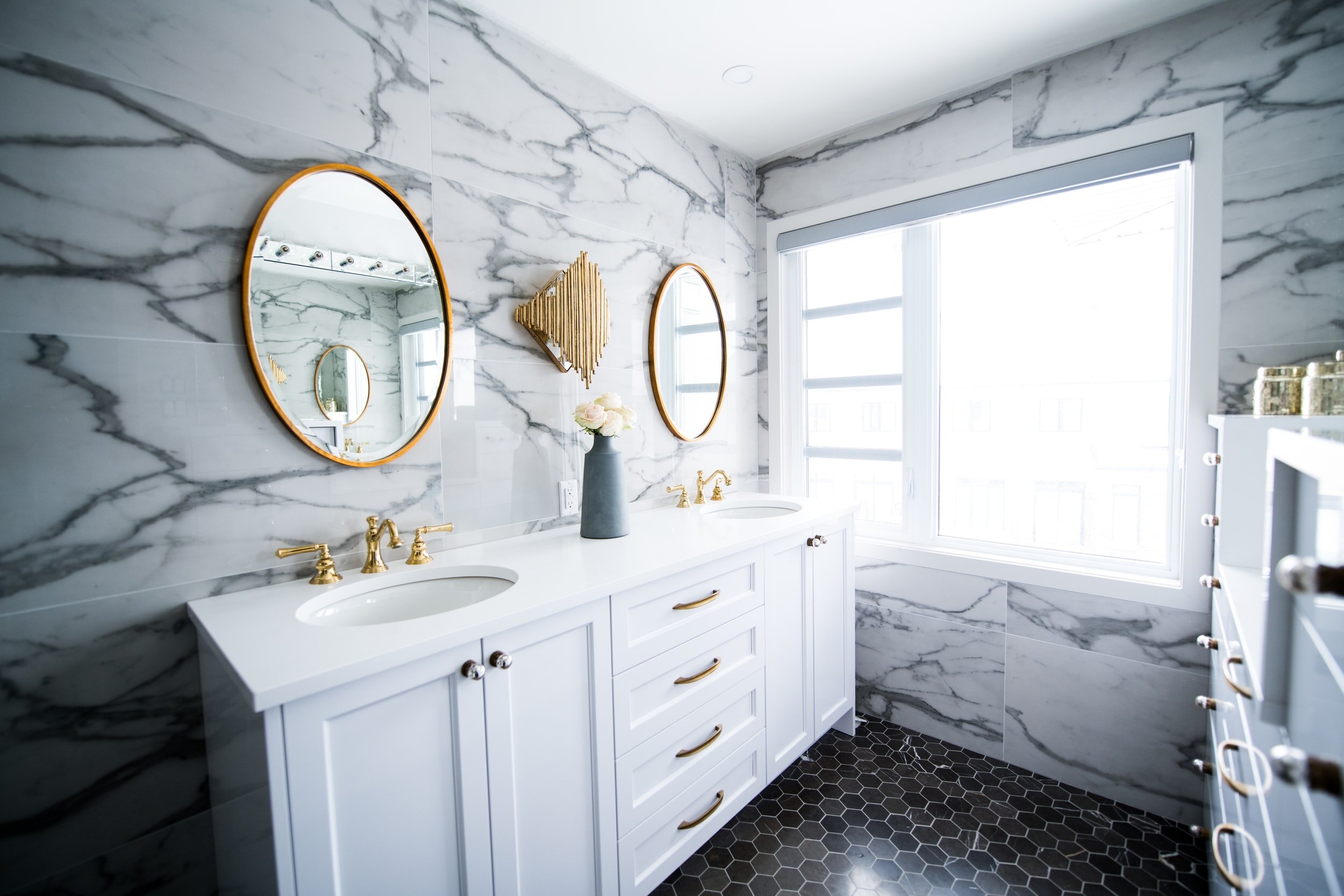
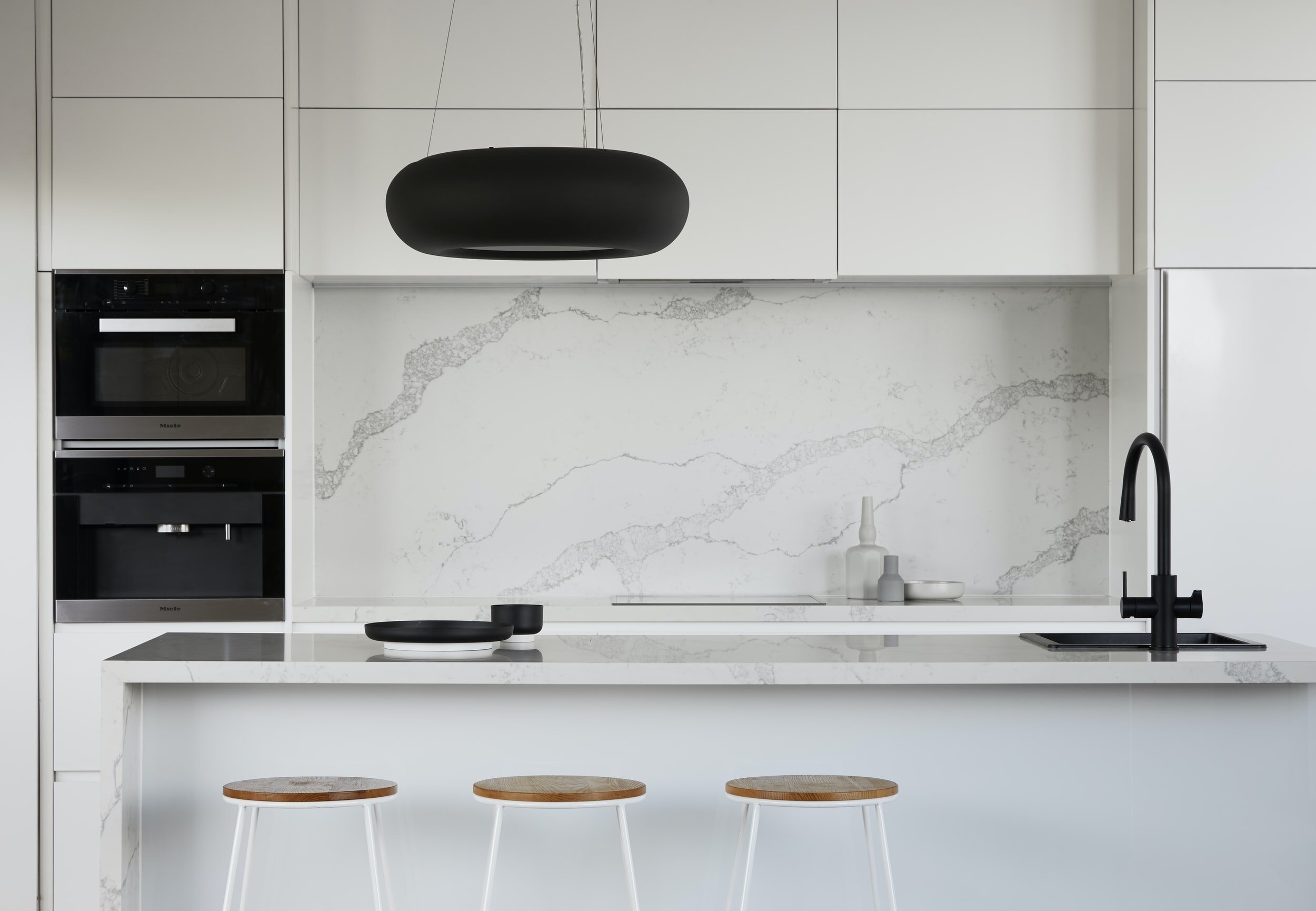





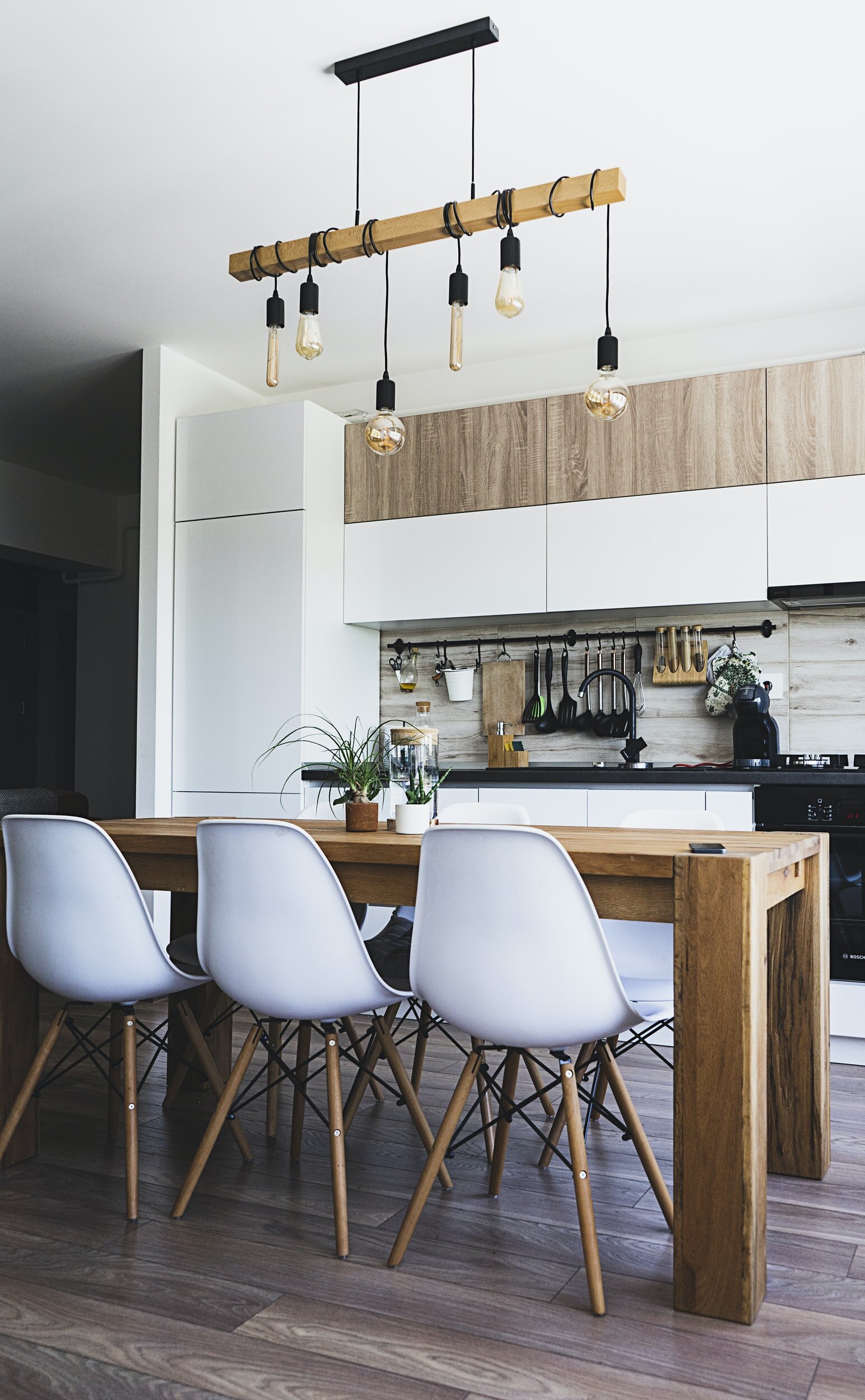















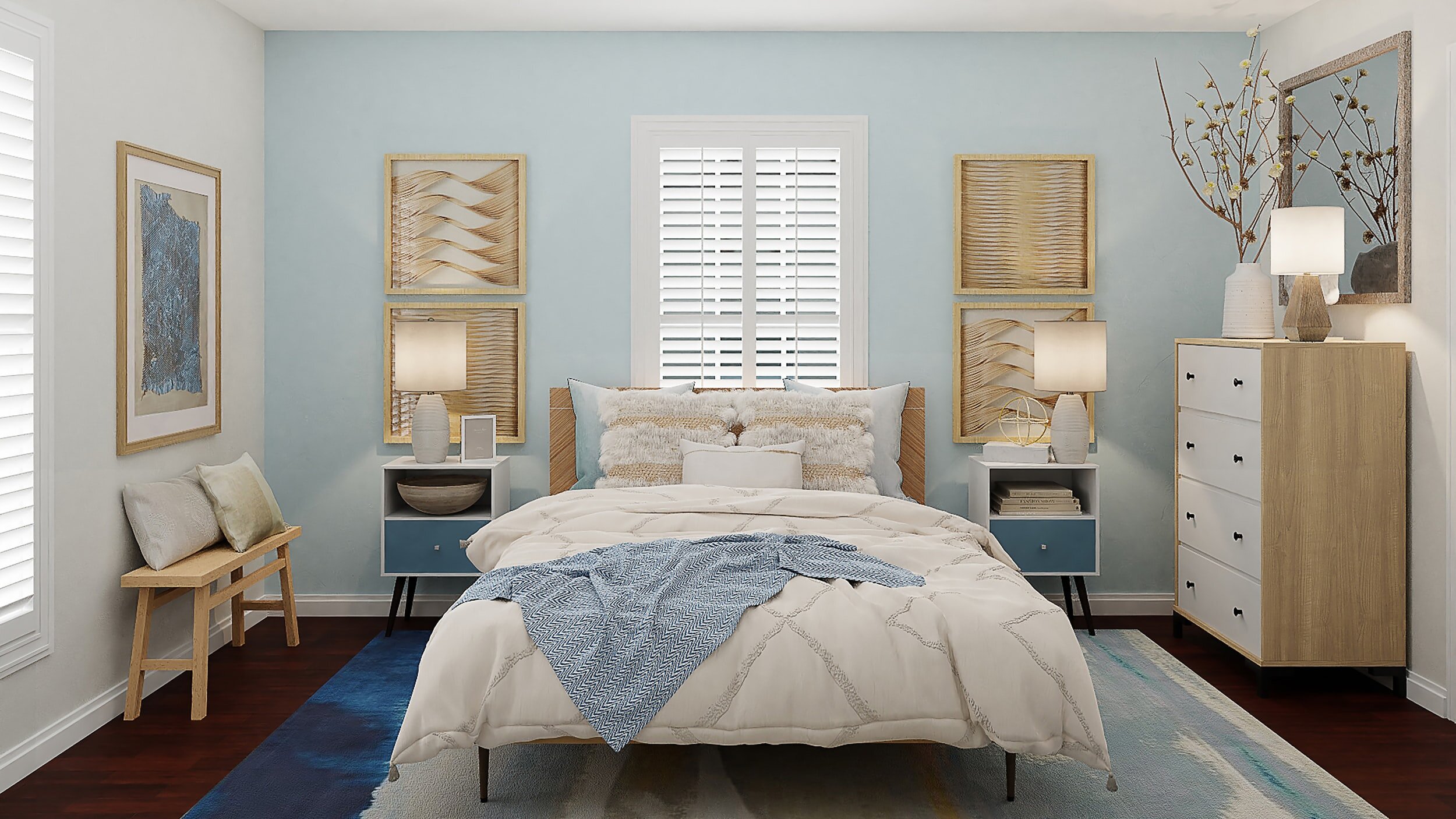













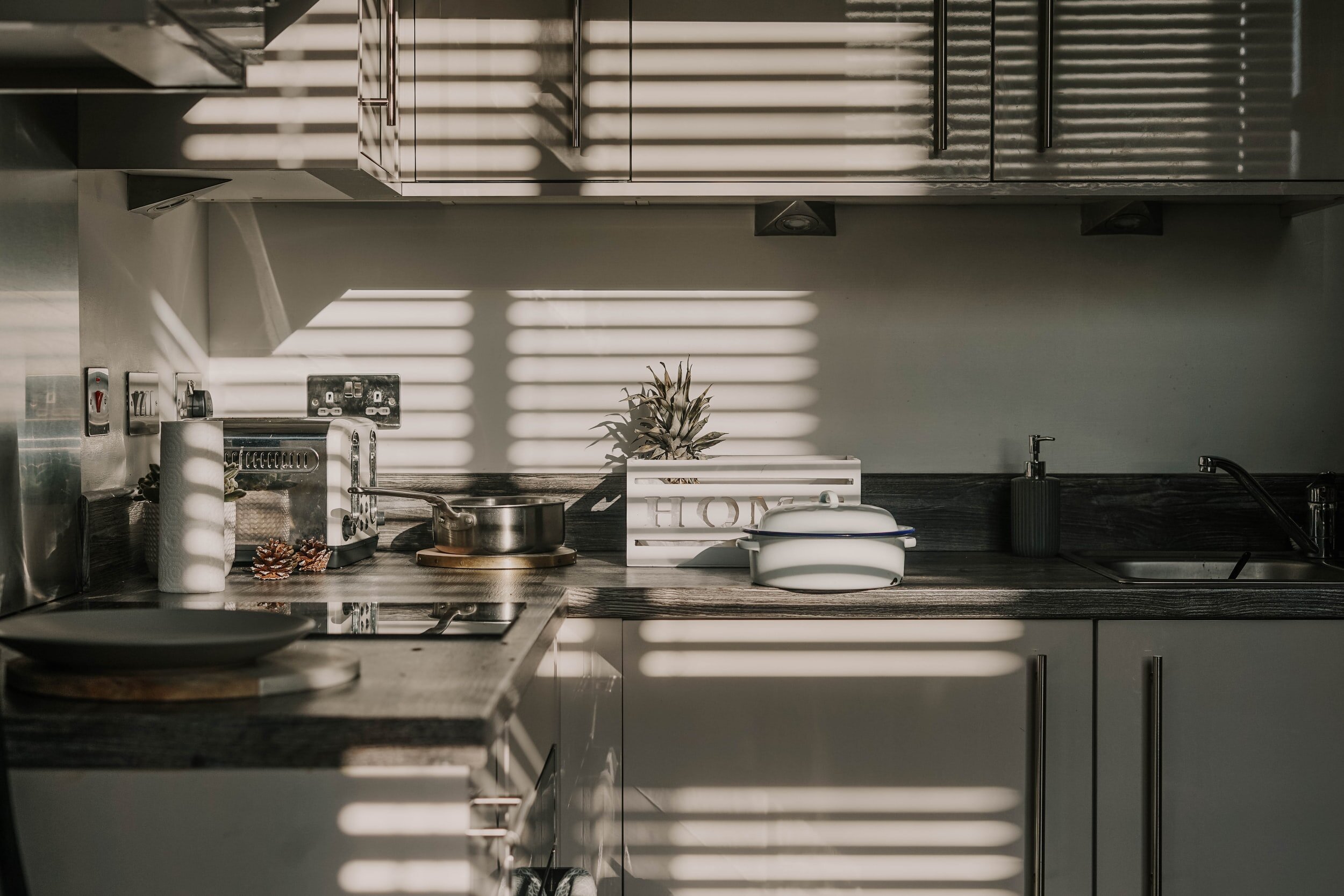

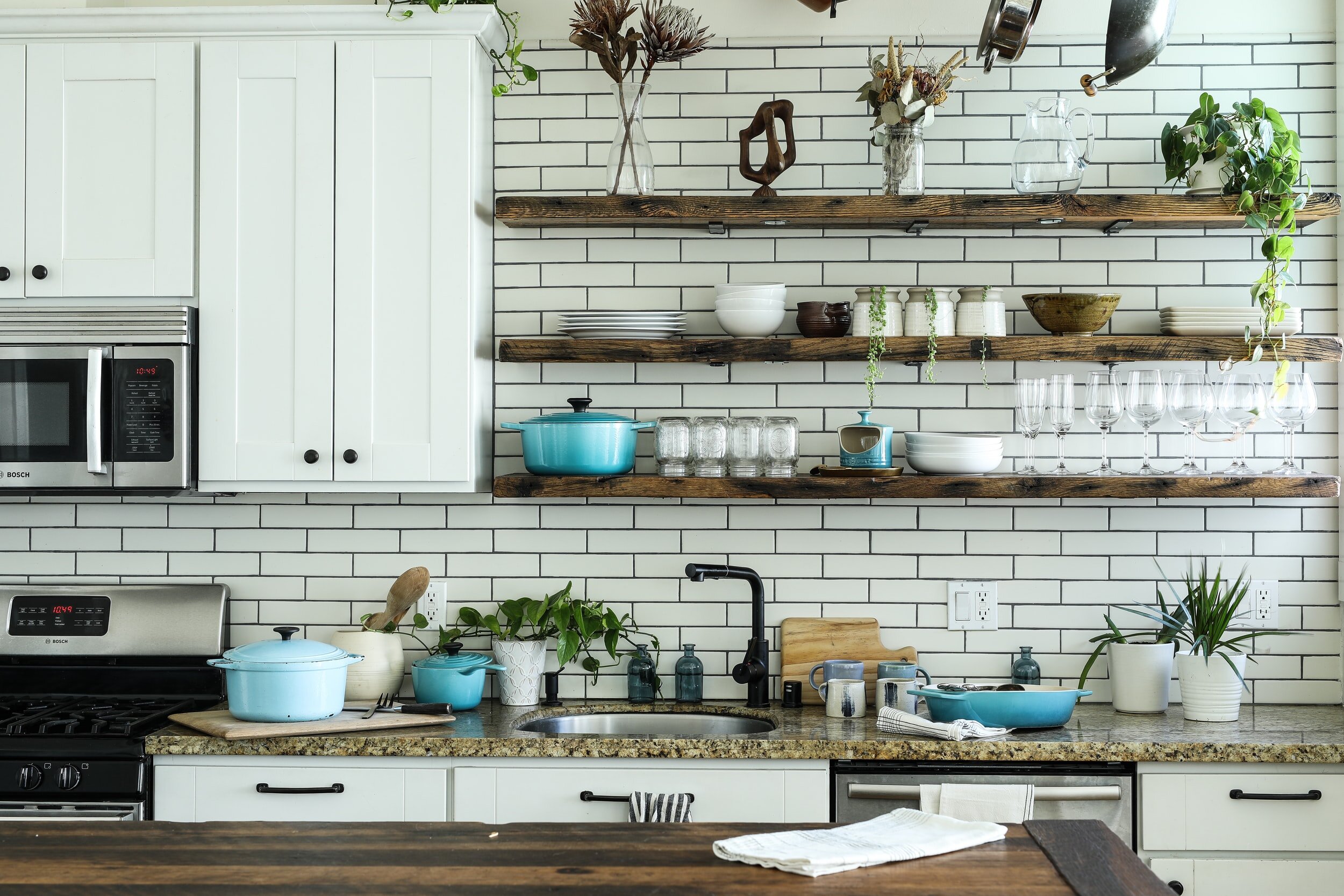
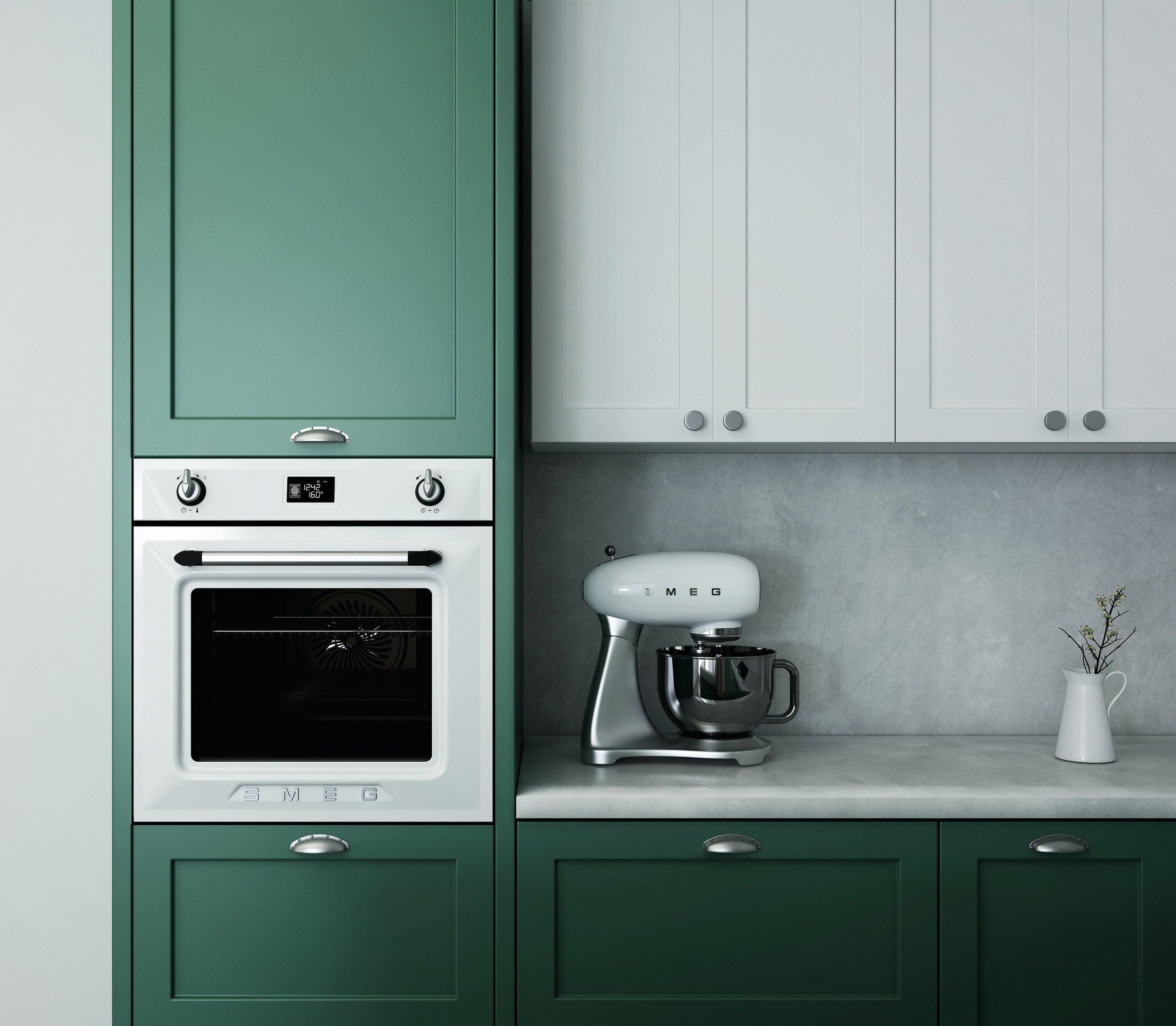
Here are our top renovation tips for 2023! Home renovations need not be super stressful, all you need is a little help to plan ahead for your upcoming project.